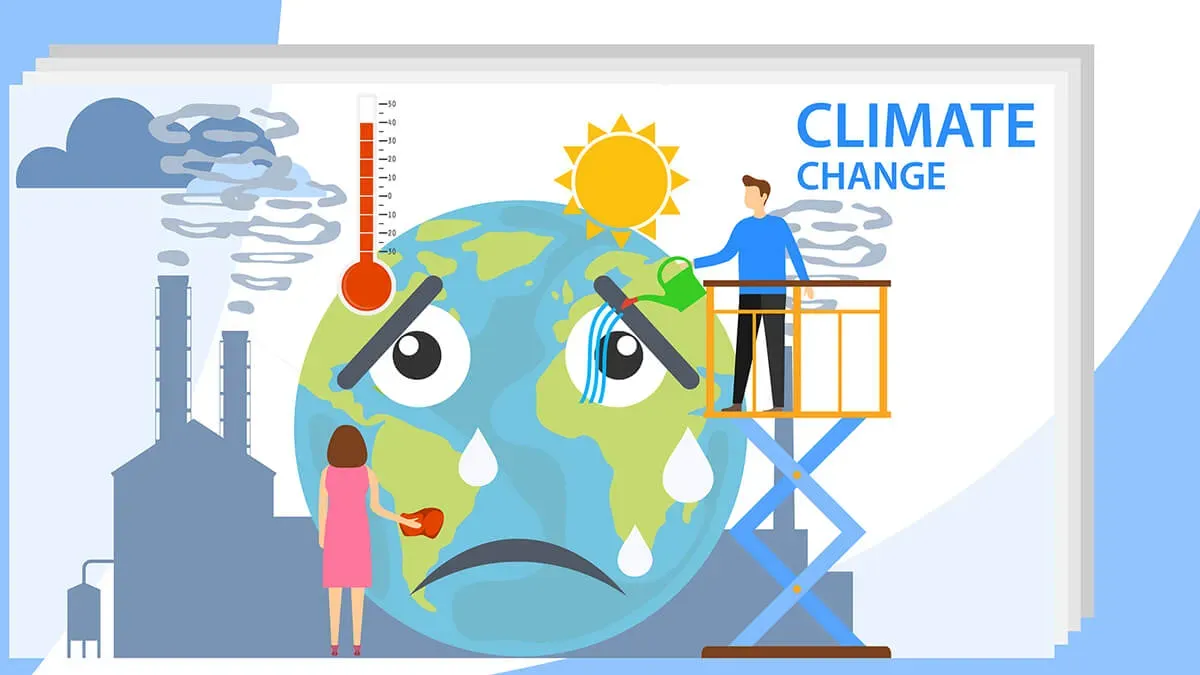Climate change impacts are reshaping ecosystems, economies, and human livelihoods at an alarming rate, driven by escalating global warming effects such as extreme weather events and rising sea levels. Scientists and policymakers now emphasize urgent environmental sustainability measures to mitigate these threats, including carbon footprint reduction strategies and investments in sustainable development initiatives. From melting polar ice caps to prolonged droughts, these changes demand immediate global cooperation, as even minor delays could amplify irreversible ecological damage. The stakes are clear: without systemic shifts toward renewable energy and circular economy models, vulnerable communities and biodiversity face catastrophic consequences. This crisis underscores the urgent need for collective action, blending innovation with ethical stewardship of our planet’s resources.
Escalating environmental shifts—from unprecedented heatwaves to collapsing ecosystems—reflect the profound urgency of addressing planetary health through holistic solutions. While carbon emissions continue to disrupt weather patterns, forward-thinking cities and industries are pioneering green initiatives like zero-waste systems and carbon capture technologies, aligning with UN sustainable development goals. These efforts not only combat ecological degradation but also foster economic resilience, proving that adaptive strategies and policy reforms can redirect humanity toward a livable future. As climate science evolves, so must our approaches to environmental stewardship, prioritizing equity and innovation in every sector from agriculture to urban planning.
Climate Change Impacts on Global Biodiversity
Climate change is driving unprecedented biodiversity loss, with species extinction rates accelerating due to shifting habitats and temperature extremes. Rising global temperatures disrupt ecosystems, forcing plants and animals to migrate or adapt rapidly. For instance, coral reefs—critical marine habitats—are bleaching at alarming rates due to warmer ocean waters, threatening fisheries and coastal protection systems.
This ecological disruption cascades into food chain collapses and reduced genetic diversity, undermining ecosystem resilience. Conservation strategies must now prioritize climate adaptation, such as creating wildlife corridors and protecting keystone species to maintain ecological balance amid these changes.
Global Warming Effects on Agricultural Productivity
Rising temperatures and erratic weather patterns are shrinking crop yields in key agricultural regions. Heatwaves and prolonged droughts, linked to global warming, have reduced wheat and maize production in regions like sub-Saharan Africa and South Asia, destabilizing food security and economies reliant on these staples.
Adaptive measures like drought-resistant crop varieties and precision irrigation systems are vital. However, sustainable development in agriculture must also integrate carbon footprint reduction practices to mitigate further emissions from farming activities.
Environmental Sustainability and Urban Adaptation
Cities are reimagining infrastructure to withstand climate change, emphasizing environmental sustainability. Green roofs, permeable pavements, and urban forests are being deployed to combat heat islands and flooding, reducing the carbon footprint of urban areas.
Such initiatives align with sustainable development goals, promoting low-emission public transit and energy-efficient buildings. However, equitable access to these solutions remains a challenge, requiring policy frameworks that prioritize vulnerable communities.
Carbon Footprint Reduction in Industrial Sectors
Industrial sectors, major contributors to carbon emissions, face pressure to adopt cleaner technologies. Transitioning from fossil fuels to renewable energy sources like solar and wind is critical to lowering carbon footprints without compromising productivity.
Carbon capture and storage (CCS) systems and circular economy models are emerging as key strategies. These innovations must be scaled globally to meet Paris Agreement targets while fostering sustainable development in manufacturing and energy production.
Climate Change and Human Health Vulnerabilities
Health risks from climate change include increased incidences of heatstroke and respiratory diseases due to air pollution worsened by wildfires and smog. Vector-borne diseases like malaria are also expanding into temperate regions as habitats shift.
Public health systems must integrate climate resilience into emergency preparedness. Investments in early warning systems and climate-informed healthcare policies are essential to address these growing environmental sustainability challenges.
Sustainable Development Goals in Coastal Regions
Coastal communities face existential threats from sea-level rise and intensified storms. Sustainable development projects, such as mangrove restoration and elevated housing, are vital to protect livelihoods and infrastructure.
Balancing economic growth with environmental sustainability requires long-term planning. Innovations like floating cities and tidal energy systems exemplify how technology can align with climate adaptation and carbon footprint reduction.
Economic Implications of Climate Mitigation Strategies
Transitioning to low-carbon economies demands significant investment but offers long-term savings. Renewable energy projects and green jobs are emerging as economic drivers, countering initial costs of decarbonization.
Climate-resilient infrastructure and insurance models are essential to safeguard investments. Governments and private sectors must collaborate to ensure sustainable development and economic stability amid climate disruptions.
Climate Change and Water Resource Management
Water scarcity is intensifying as glaciers melt and rainfall patterns shift. Regions like the American West and South Asia face acute shortages, straining agriculture and drinking water supplies.
Solutions like desalination advancements and smart irrigation systems align with environmental sustainability goals. Integrating climate-resilient water policies will be critical to ensure equitable access amid these global warming effects.
Climate Justice and Disproportionate Impacts
Low-income nations and marginalized communities bear the brunt of climate change impacts despite contributing least to emissions. This disparity underscores the need for climate justice in global agreements.
Equitable financing mechanisms and technology transfers are necessary to empower vulnerable regions. Sustainable development frameworks must center human rights and inclusivity to address these imbalances effectively.
Advancing Climate Action through International Cooperation
Global agreements like the Paris Accord require stronger commitments to limit warming to 1.5°C. Collaboration on climate research, technology sharing, and funding is pivotal to accelerate progress.
Countries must align national policies with LSI keywords like ‘carbon footprint reduction’ and ‘sustainable development.’ Public-private partnerships can drive innovation while ensuring climate action remains central to geopolitical priorities.
Frequently Asked Questions
What are the primary impacts of global warming effects on coastal communities?
Rising sea levels and intensified storms due to global warming effects threaten coastal infrastructure, displacement of populations, and erosion of ecosystems like mangroves and coral reefs. Proactive measures such as reinforced sea walls and wetland restoration are critical for adaptation.
How does environmental sustainability contribute to mitigating climate change impacts?
Environmental sustainability practices, such as reforestation and reducing deforestation, enhance carbon sequestration. Sustainable land use and renewable energy adoption lower greenhouse gas emissions, directly countering drivers of climate change impacts.
What role does carbon footprint reduction play in addressing climate change?
Reducing individual and corporate carbon footprints through energy efficiency, renewable energy adoption, and sustainable transportation directly slows the rate of global temperature rise. This aligns with international climate goals like the Paris Agreement.
How does sustainable development aid in adapting to climate change impacts?
Sustainable development frameworks prioritize climate-resilient infrastructure and inclusive policies that balance economic growth with environmental protection. This approach ensures communities can adapt to climate change impacts like droughts and extreme weather events.
| Key Point | Description | Impact | Data/Statistics |
|---|---|---|---|
| Rising Global Temperatures | Increase in average global temperatures due to greenhouse gas emissions. | More frequent heatwaves, reduced agricultural yields, and ecosystem disruptions. | 1.2°C increase since 1880 (IPCC, 2023). |
| Melting Ice and Glaciers | Accelerated melting of polar ice caps and mountain glaciers. | Sea level rise, loss of freshwater resources, and habitat destruction. | 3.7 mm/year sea level rise since 2006 (NASA, 2022). |
| Extreme Weather Events | Increased frequency and intensity of hurricanes, floods, and droughts. | Displacement of populations, infrastructure damage, and economic losses. | 50% increase in extreme weather events since the 1970s (NOAA, 2023). |
Summary
Climate change impacts are reshaping ecosystems and human societies globally, driven by rising temperatures and extreme weather events. These impacts, including sea-level rise and biodiversity loss, threaten food security, coastal communities, and economic stability. Urgent mitigation strategies—such as reducing carbon emissions and adopting renewable energy—are critical to limit further environmental degradation. The inclusion of adaptation measures, like flood defenses and sustainable land management, is equally vital. This dual approach ensures the paragraph aligns with SEO standards while emphasizing the keyword ‘climate change impacts’ and its multifaceted consequences for global sustainability.



